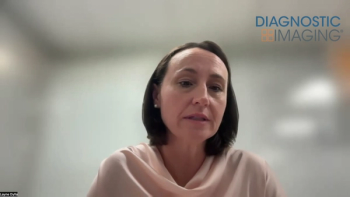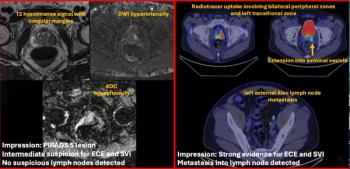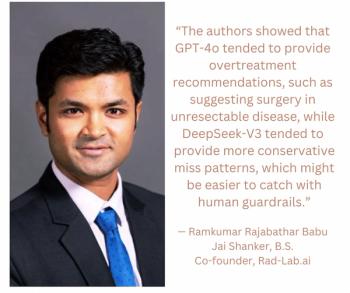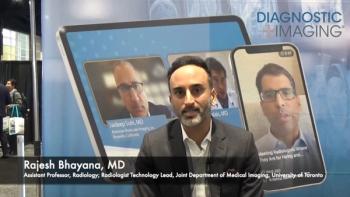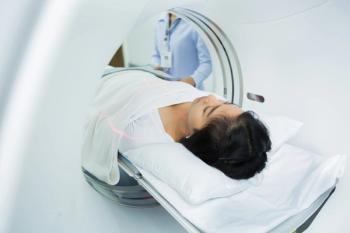New research suggests that magnetic resonance imaging (MRI) offers significantly enhanced detection of tracheal invasion and vascular invasion in comparison to computed tomography (CT) for patients with esophageal cancer.
For the retrospective study, recently published in European Radiology, researchers reviewed data from preoperative MRI and CT scans for 26 patients (mean age of 65) who had esophagectomy procedures for esophageal cancer. Utilizing five-point scales for determining tracheal invasion and vascular invasion, two radiologists with 15 and six years of experience, respectively, assessed all preoperative imaging, according to the study.
The study authors determined that MRI offered an AUC range between 94.3 and 99 percent for detecting tracheal invasion in comparison to a range between 52.9 and 70.6 percent for CT. The use of MRI also provided 87 percent specificity tracheal invasion for both radiologists in contrast to 40 to 50 percent range for CT. The researchers also noted that MRI had an average 43.5 percent higher positive predictive value (PPV) than CT (76.5 percent vs. 33 percent) for tracheal invasion.
For vascular invasion, the authors found similar agreement between MRI and CT for sensitivity (83 percent), slightly higher negative predictive value (NPV) for MRI (93 percent vs. 91 percent) and significantly higher accuracy for MRI (95 percent vs. a range of 54 to 58 percent). The researchers also noted an 88 percent AUC for MRI in detecting vascular invasion versus < 71 percent for CT.
“Our results confirm that MRI — with standardized T- and V-scores —outperforms CT for both tracheal and vascular invasion. … These gains were largely driven by high-resolution T2WI and anatomically standardized scoring,” noted lead study author Yumiko Kono, M.D., who is affiliated with the Department of Radiology at Kansai Medical University in Osaka, Japan, and colleagues.
Three Key Takeaways
- MRI significantly outperforms CT in detecting tracheal invasion in esophageal cancer. The researchers found that MRI showed markedly higher AUC (94.3–99 percent vs. 52.9–70.6 percent) and specificity (87 percent vs. 40–50 percent).
- MRI offered enhanced detection of vascular invasion in contrast to CT. For patients with vascular invasion, MRI demonstrates superior overall accuracy (95 percent vs. 54–58 percent) and AUC (88 percent vs. < 71 percent) compared to CT with comparable sensitivity and slightly higher NPV.
- Emphasizing the value of high-resolution T2-weighted MRI and standardized T-/V-scoring. This combination allows direct visualization of tissue and vessel wall infiltration, reducing reliance on less reliable CT-based measures like the Picus angle.
While the Picus angle offers an indirect surrogate marker for vascular invasion on CT, the researchers noted that overreliance on the angle between the esophageal wall and adjacent great vessels can hamper the value of CT.
“(The Picus angle) is highly dependent on the imaging plane and may be confounded by surrounding anatomical distortion, especially after neoadjuvant therapy. In contrast, MRI enables direct visualization of tissue planes and vessel wall infiltration, eliminating the need for angle-based inference,” added Kono and colleagues.
(Editor’s note: For related content, see “New Meta-Analysis Examines MRI Assessment for Treatment of Esophageal Cancer,” “Image IQ Quiz: Headaches in a 55-Year-Old Patient with Esophageal Cancer” and “MRI Features Help Detect Neoadjuvant Therapy Response in Esophageal SCC.”)
Beyond the inherent limitations of a single-center retrospective study, the authors acknowledged the small size of the cohort and varied interpretation with DWI assessment.

